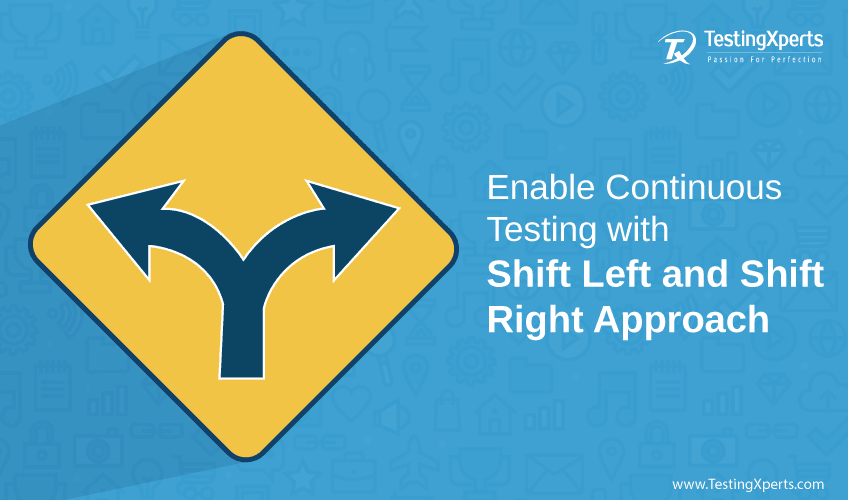Recommended Blogs
Enable Continuous Testing with Shift Left and Shift Right Approach

Gone are the times when testing was considered a separate process and was carried out post-development of the application. The present-day business process requires a faster, steadier and better IT performance. The introduction of advanced and new methodologies of software models such as DevOps has allowed testers to display their presence and apply their earnest efforts towards quality achievement in a software application right from its inception.
Table of Contents:
- What is Shift left testing approach
- What is Shift right testing approach
- Advantages of adopting shift-left and shift-right approach
- Continuous testing
- Conclusion
- Read more blogs on Continuous Testing
Besides, it is also significant to mention that regardless of the vigorous and continuous testing efforts created right from the beginning of the development stage till the production, and it is equally important to offer the best quality software products to the customers even after production.
The methodologies of testing the software application through the development phase and testing post-development are referred to as the shift left and shift right testing approach.
Shift Left Testing : Improve Your QA
Shift left testing approach shifts the testing process to be integrated from the very beginning of the development lifecycle, i.e. requirements phase. In this approach, all project stakeholders share a proper understanding of what a quality application means. During this approach, acceptance tests describe the project’s accomplishment and successfully drive the development.
Continuous testing right from the development phase and throughout the phase helps in locating, identifying, and fixing the flaws arising at each level of the development lifecycle. Shift left approach helps in identifying and addressing defects very early in the lifecycle. The early introduction of the testing process offers flexibility to the developers to apply dynamic changes throughout the development phase. This approach helps in preventing defects rather than facing unexpected defects at a later stage. Therefore, shift left approach is considered to be the economical way of reducing the time, effort, and cost of fixing the defects at a much later stage.
Shift Right Testing Approach
While shift left testing approach helps in delivering software that adheres to quality attributes as specified by the business, it may sometimes lack in providing the proper performance and functioning in a real-world environment. This is where shift right testing approach comes into the picture. It helps initiate the testing task from the right, which means the post-production of the software.
In this approach, feedback is gathered from targeted users to experience satisfaction in managing and using the software in real-world conditions, thereby improving the quality. Shift right process helps in getting continuous feedback from users, which is quite significant in the testing process. It helps respond better to unexpected circumstances such as crashes, slow performance, failure, and many other things.
Advantages of adopting shift-left and shift-right approach:
• Time and effort can be saved immensely
• Bugs are detected and fixed early
• Promotes cost-effectiveness
• High test coverage
• Promotes teamwork within the tester and developer community
• Accelerates software delivery
• Quality software in production
A proper test strategy should be created to incorporate techniques of shifting left and right, thereby making the process better, faster, and steadier for continuous delivery.
Continuous testing
It is the process of executing automated tests as part of the software delivery pipeline to gain instant response on the business risks regarding the software release. Continuous testing is a critical part of DevOps, where the focus is on approaching automation as an end-to-end solution and testing frequently.
Conclusion
DevOps practices can ensure significant savings on cost and time while increasing quality. Although it involves additional effort on automation initially, if done right, this can be a rewarding investment. TestingXperts, with its matured DevOps QA practices and wide-ranging testing experience, can help build the right QA capabilities for DevOps and Agile for your organization.
Discover more
Stay Updated
Subscribe for more info

